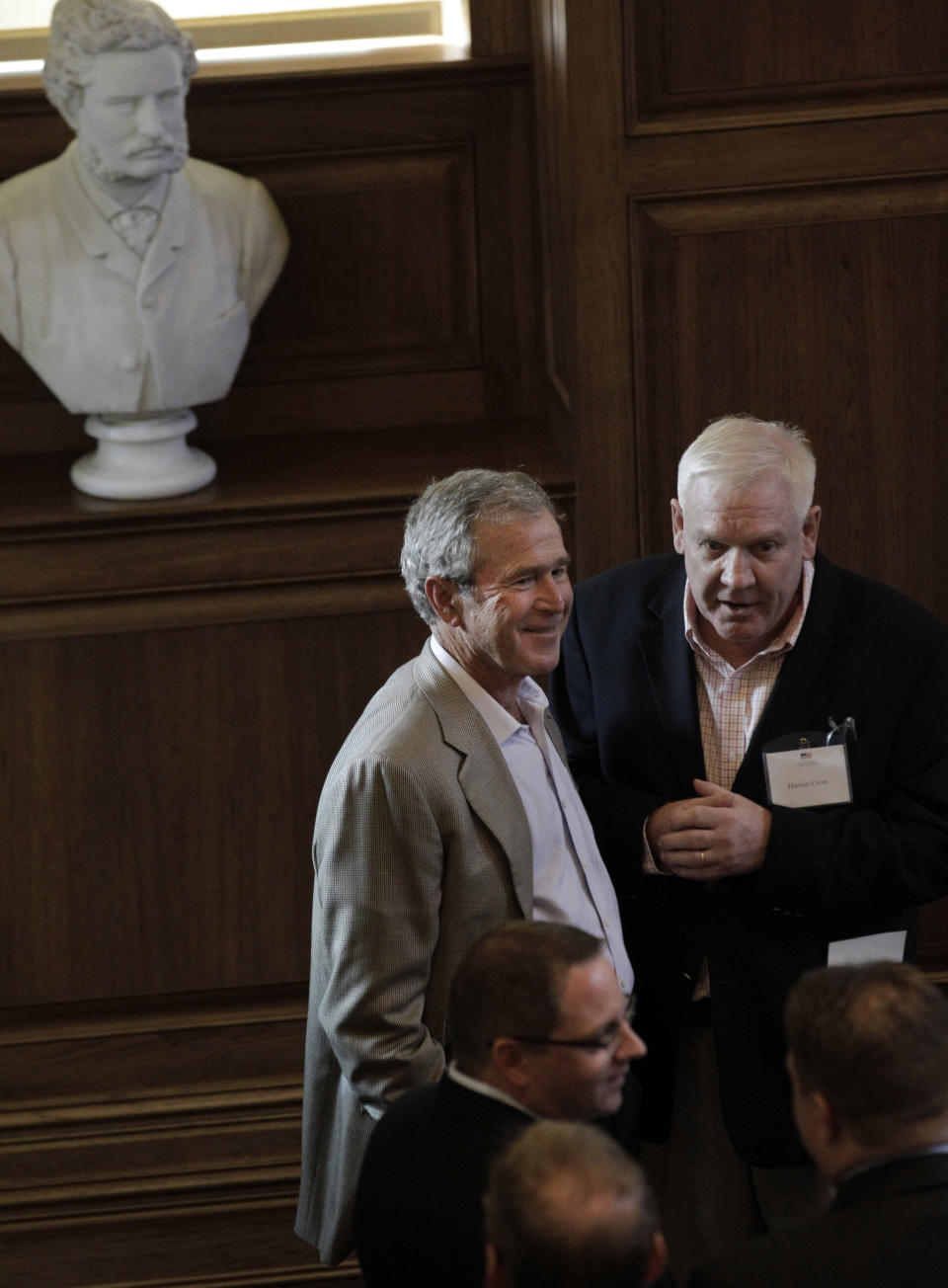Bush Institute launches book on economic growth
DALLAS (AP) — Former President George W. Bush said he wants his institute, which Tuesday released a book featuring experts weighing in on ways for the U.S. to jumpstart the economy toward 4 percent gross domestic product growth, to be an "action-oriented" place.
"We're very much involved in action-oriented programs," Bush told the about 200 people gathered for the release event for the George W. Bush Institute's first book.
Bush's brief speech was followed by a panel discussion with several of those who contributed to "The 4 Percent Solution: Unleashing the Economic Growth America Needs."
"We believe that we can do better in growing our economy," said Bush, who wrote the book's foreword.
He added, "My view is that we'll never fix the deficit without growing the private sector."
Bush also spoke about a trip he and former first lady Laura Bush took earlier this month to promote a partnership between the institute and other organizations to fight cervical and breast cancer in sub-Saharan Africa. The trip included a stop in Zambia to help renovate a women's cancer screening center.
"I wanted the message to be, it doesn't matter what your status in life is. You're never too proud to handle a paintbrush," he said. "I ended up with more paint on me than on the wall."
James K. Glassman, executive director of the Bush Institute, has said that the book — which includes entries by five Nobel Prize winners — is part of "The 4 Percent Growth Project" launched last year with a goal to "change the conversation in America so that it focuses on the goal of sustainable, strong growth."
"We think that the way to solve the economic problems that America faces can be summed up in 4 percent growth. Right now we're growing about at 2 percent. We've grown an average of about 3 percent since the end of World War II," said Glassman, who wrote the book's introduction.
Economic growth is one of the Bush Institute's focal points, along with education, global health and freedom. The institute and the presidential library will be housed at the George W. Bush Presidential Center, which is under construction on the campus of Southern Methodist University.
There were two recessions during Bush's eight years in office, the first a mild downturn that began in March 2001, just after he took office, and lasted eight months. The second, which began in December 2007 and ended in June 2009, months after he left office, became known as the Great Recession, the longest and deepest since the Great Depression of the 1930s.
"While the causes of the 2008 crisis will be debated by scholars for decades to come, we can all agree that excessive risk-taking by financial institutions, irresponsible decisions by lenders and borrowers, and market-distorting government policies all played a role," Bush says in the book's foreword. "The question now is which policies we should adopt to fix the problems, speed the recovery, and lay the foundation for another long, steady expansion."
Glassman said ideas in the book for stimulating the economy include broad tax reform that would keep taxes low — extending the Bush-era tax cuts, broadening the tax base by getting rid of special exemptions and loopholes, taxing consumption rather than income and lowering corporate taxes. He said the book also touches on immigration policy and its effect on the economy, advocating for a policy that would help "attract the smartest people from around the world."
Glassman said that the hope is that the idea of focusing on growth will become part of the conversation this election season.
"Certainly Republicans and Democrats can disagree on how to get growth," Glassman said. "Some people say, 'Well, the best way to get growth is through government spending.' We disagree with that, but that certainly is a position to take. We say cut government spending, reform taxes, change immigration policy and so on."
Since leaving office, Bush largely has avoided the political scene, instead focusing on the work of his institute.
___
Online:
George W. Bush President Center, http://www.georgewbushcenter.com




